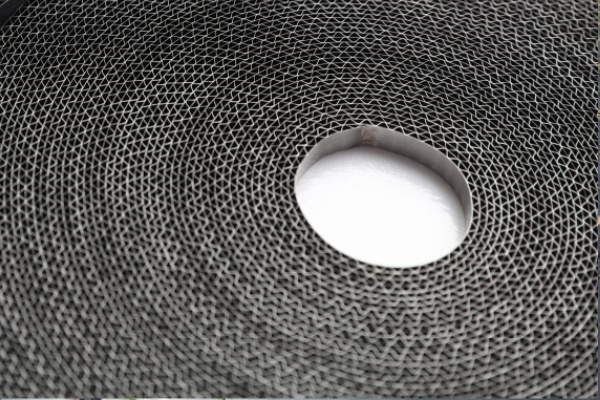To be a valuable global supplier
for metallic honeycombs and turbine parts
Release time:2025-11-12
For marine and NRMM applications, two main materials are typically used for metal honeycomb substrates: FeCrAl and stainless steel (mainly SS316L). Both have their place, but they behave very differently under real-world conditions.
FeCrAl, short for iron-chromium-aluminum alloy, forms a stable alumina (Al₂O₃) layer when heated. That oxide film is dense and adherent, meaning it protects the metal core even under repeated high-temperature cycles above 900°C. In marine engines where exhaust temperatures can spike during regeneration or heavy load, that’s a big advantage. It’s also extremely oxidation-resistant, which helps the substrate last longer in high-sulfur or humid environments.
SS316L, on the other hand, is more commonly used in mild environments or where cost is a concern. It resists general corrosion and offers good weldability, but under prolonged salt spray or high-temperature oxidation, it tends to lose surface integrity faster. For nearshore vessels or equipment running continuously in dusty, wet areas, FeCrAl simply holds up better.

Material choice is just the start. The way the DOC metal substrate is sealed, mounted, and protected is equally critical. Marine exhaust systems often face condensation inside the pipes when engines cool down, leading to water droplets forming directly on the catalyst. To counter this, engineers typically design water-draining housings, double-layer insulation, and anti-condensation coatings on the inlet side.
In non-road applications—like loaders, tractors, or generators—the challenge is more about vibration and shock. The substrate must be brazed securely and supported with expansion joints or resilient mats to absorb mechanical stress. We’ve seen cases where an otherwise perfect substrate failed simply because the canning gap was too tight, causing cracks after hundreds of hours of vibration.
Salt spray and humidity are another hidden threat. For marine DOC metal substrate, we usually apply high-temperature ceramic coatings on the external shell, and sometimes even a thin silica layer on the inlet face to reduce moisture penetration. It’s these small design tweaks that keep the catalyst active after thousands of operating hours at sea.
DOC metal substrate in these sectors aren’t just there to meet regulations—they also play a role in keeping the exhaust clean for crew safety and nearby environments. A well-built DOC metal substrate oxidizes CO and hydrocarbons efficiently while helping to generate NO₂ for DPF regeneration downstream.
In practice, that means stable temperature management and consistent flow distribution. Honeycomb geometry plays a part here too: cells per square inch (CPSI), wall thickness, and coating uniformity determine both the catalytic activity and back pressure. The trick is balancing conversion efficiency with durability—too dense a structure can trap soot and cause blockage, while too open a design reduces contact time with the catalyst.
Regular maintenance also matters. Marine operators often overlook it, assuming “stainless” means “maintenance-free.” In reality, even the best FeCrAl substrates benefit from periodic inspection, especially in engines burning low-grade fuel or running at variable load.
In short, when it comes to marine and non-road diesel engines, the DOC metal substrate isn’t a generic part—it’s an engineered component built to survive where others corrode, vibrate loose, or fail. And the difference often comes down to the unseen details: alloy chemistry, coating process, and the experience of the people who build them.